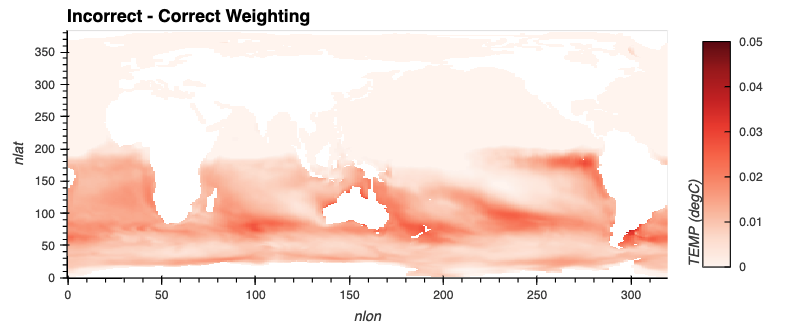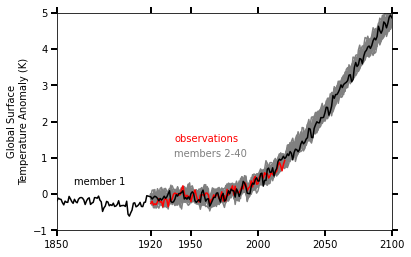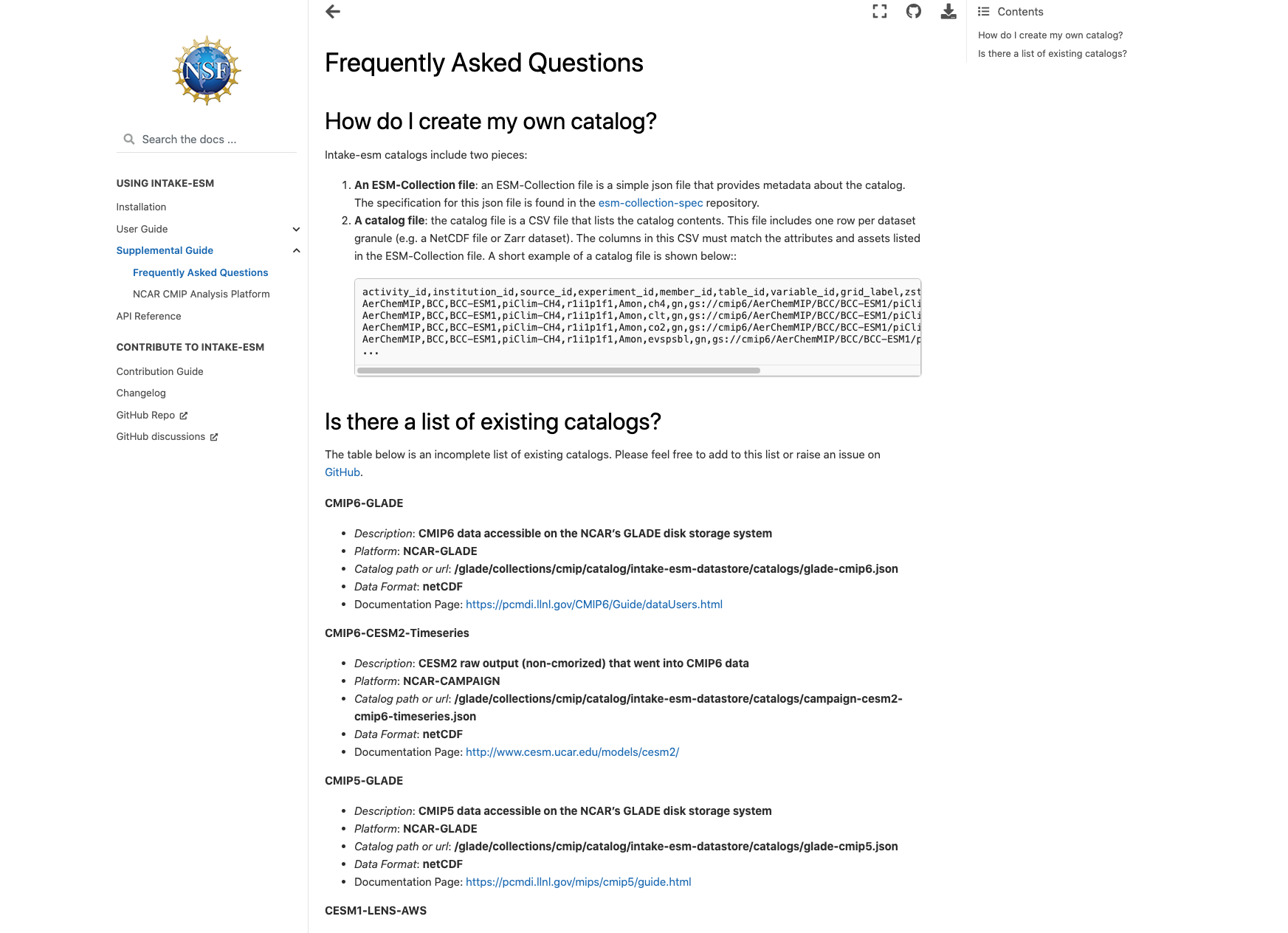Posts tagged cesm2-le
Correctly Calculating Annual Averages with Xarray
- 19 November 2021
A common component of people’s workflows is calculating annual averages, which helps reduce the frequency of datasets, making them easier to work with. Two of the data frequencies you may be looking to convert to annual include:
Daily (365 days in each year)

CESM2-Large Ensemble Reproduction of a Figure from Kay et al. 2015 Using Intake-ESM and hvPlot
- 08 October 2021
This Jupyter Notebook demonstrates how one might use the NCAR Community Earth System Model v2 (CESM2) Large Ensemble (CESM2-LE) data hosted on AWS S3. The notebook shows how to reproduce figure 2 from the Kay et al. (2015) paper describing the CESM LENS dataset (doi:10.1175/BAMS-D-13-00255.1), with the LENS2 dataset.
There was a previous notebook which explored this use case, put together by Joe Hamman and Anderson Banihirwe, accessible on the Pangeo Gallery using this link. The specific figure we are replicating is shown below.

Comparing Atmospheric Model Output with Observations Using Intake-ESM
- 27 August 2021
Comparing models and observations is a critical component of climate diagnostic packages. This process can be challenging though - given the number of observational datasets to compare against, and the difference in spatiotemporal resolutions. In the previous iteration of the diagnostics package used for atmospheric data from the Community Earth System Model (CESM), they used pre-computed, observational datasets stored in a directory on the GLADE filesystem (/glade/p/cesm/amwg/amwg_diagnostics/obs_data)
Within this example, we walk though generating an intake-esm catalog from the observational data, reading in CESM data, and compare models and observations
Using Intake-ESM to Analyze Data from CESM2-LE
- 06 August 2021
In mid June, the CESM2 Large Ensemble dataset was made available to the public. This model was run in collaboration with the IBS Center for Climate Physics and the National Center for Atmospheric Research This dataset includes 100 ensemble members, at one degree spatial resolution, with each ensemble member including data from 1850 to 2100. If you are interested in learning more about how this ensemble was setup, be sure to check out the main webpage or read the pre-print of Rodgers et al. 2021 which describes this dataset in detail.
One of these challenges with this dataset is dealing with the massive amount of output. The data are available through the NCAR Climate Data Gateway and via the IBS OpenDAP Server. There is also a subset of the dataset available on the GLADE file system on NCAR HPC resources available within the directory /glade/campaign/cgd/cesm/CESM2-LE/timeseries/.
